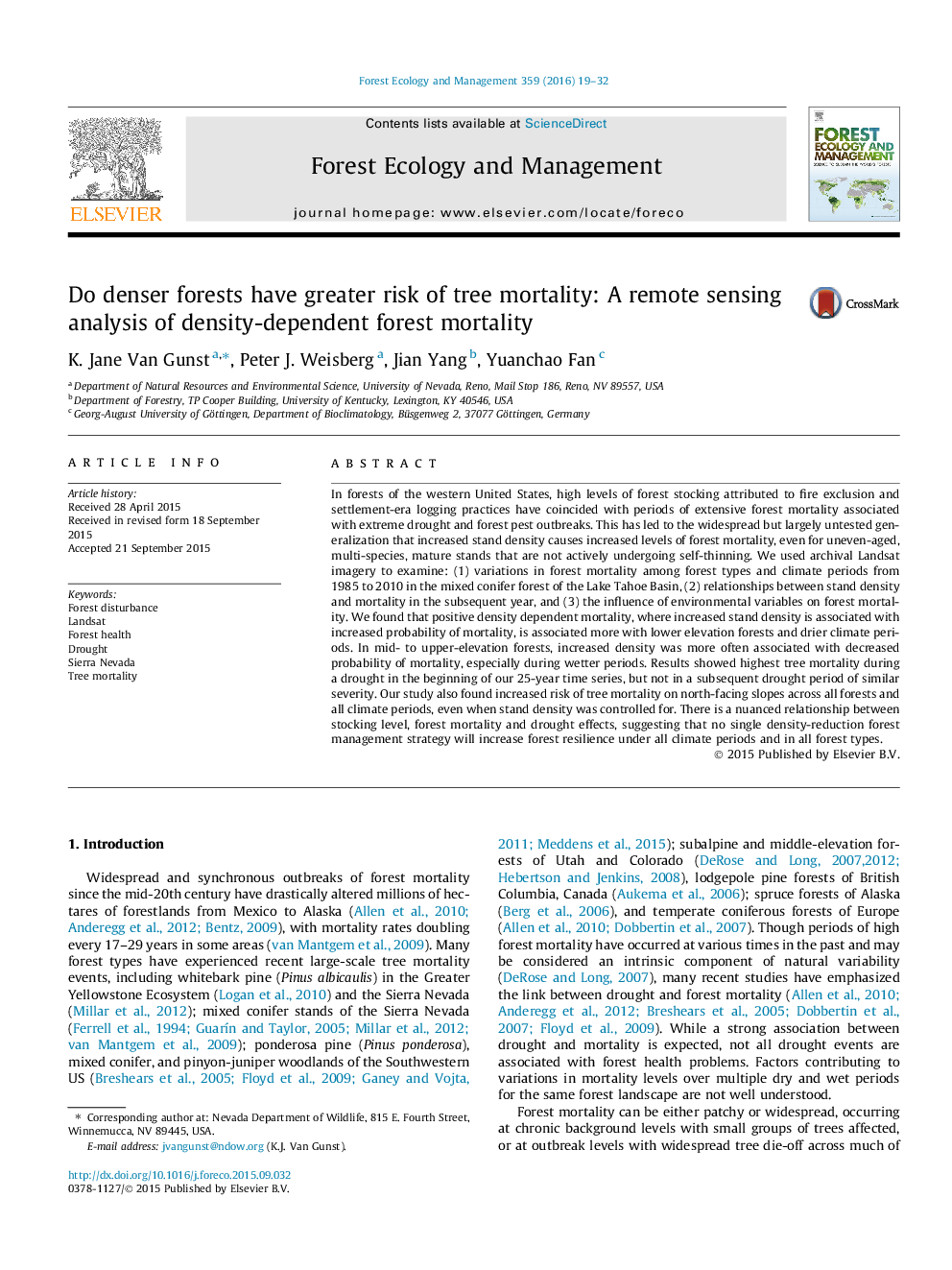| Article ID | Journal | Published Year | Pages | File Type |
|---|---|---|---|---|
| 6542613 | Forest Ecology and Management | 2016 | 14 Pages |
Abstract
In forests of the western United States, high levels of forest stocking attributed to fire exclusion and settlement-era logging practices have coincided with periods of extensive forest mortality associated with extreme drought and forest pest outbreaks. This has led to the widespread but largely untested generalization that increased stand density causes increased levels of forest mortality, even for uneven-aged, multi-species, mature stands that are not actively undergoing self-thinning. We used archival Landsat imagery to examine: (1) variations in forest mortality among forest types and climate periods from 1985 to 2010 in the mixed conifer forest of the Lake Tahoe Basin, (2) relationships between stand density and mortality in the subsequent year, and (3) the influence of environmental variables on forest mortality. We found that positive density dependent mortality, where increased stand density is associated with increased probability of mortality, is associated more with lower elevation forests and drier climate periods. In mid- to upper-elevation forests, increased density was more often associated with decreased probability of mortality, especially during wetter periods. Results showed highest tree mortality during a drought in the beginning of our 25-year time series, but not in a subsequent drought period of similar severity. Our study also found increased risk of tree mortality on north-facing slopes across all forests and all climate periods, even when stand density was controlled for. There is a nuanced relationship between stocking level, forest mortality and drought effects, suggesting that no single density-reduction forest management strategy will increase forest resilience under all climate periods and in all forest types.
Related Topics
Life Sciences
Agricultural and Biological Sciences
Ecology, Evolution, Behavior and Systematics
Authors
K. Jane Van Gunst, Peter J. Weisberg, Jian Yang, Yuanchao Fan,
